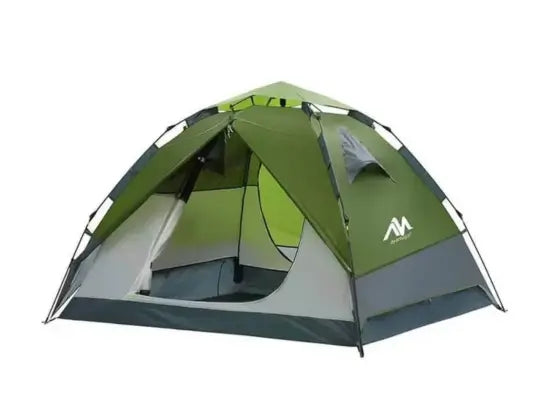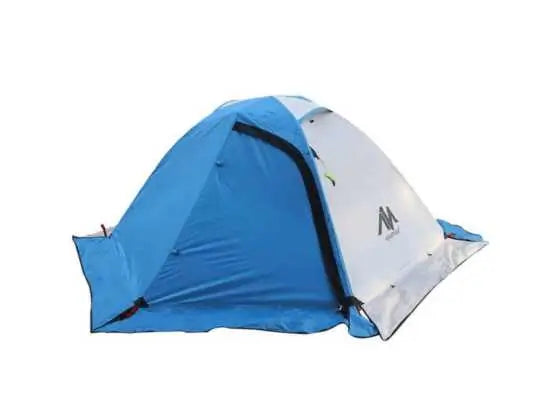Introduction
Venture into the heart of California where the towering redwoods and ancient sequoias stand. This article will guide you through five exceptional areas where these awe-inspiring trees dominate the landscape, offering visitors a glimpse into the natural world's towering achievements. From the misty coasts of Northern California to the rugged Sierra Nevada, each location provides a unique setting to explore these magnificent trees. I was raised in Southern California and I'm always amazed at how people down south just haven't made it up north check out these astonishing areas. I'm not pointing fingers, as I didn't make it up to Yosemite until I was in my late 40s. The good news is that, now is the time! Whether you're from Kansas, Florida or Iceland, if you're visiting California, it will be well worth it carve out a few days for these monster tree sanctuaries! Take a look at some of our favorites and why!

Redwood National State Parks
Overview of the parks location and significance
- Nestled along the coast of northern California, Redwood National and State Parks protect 139,000 acres of forested and scenic coastal area. These parks are renowned for preserving some of the tallest trees in the world, the coast redwoods (Sequoia sempervirens), which can grow over 350 feet tall. The parks' ecosystems also support a diverse range of wildlife and provide a critical habitat for several endangered species. The preservation efforts here not only protect the physical grandeur of these trees but also the ecological diversity that relies on this forest.
Tall Trees Grove and Lady Bird Johnson Grove
- Tall Trees Grove is celebrated for once housing the world’s tallest tree, a testament to the grove's pristine condition and natural beauty. This remote grove requires a free permit for access, ensuring a serene hiking experience without crowds. Lady Bird Johnson Grove, on the other hand, offers an easier access point and is one of the most visited parts of the parks. Situated on a ridge above the fog line, this grove was dedicated by Lady Bird Johnson herself in 1968 and provides a stunning introduction to the redwood ecosystem via a well-maintained loop trail.
Tips for hiking, camping, and wildlife watching
- The parks offer over 200 miles of trails varying in difficulty from easy strolls to strenuous multi-day hikes. For those interested in camping, there are developed campgrounds available, such as Elk Prairie and Gold Bluffs Beach, which provide a full experience of living among ancient giants and rugged coastal scenery. Wildlife watching is particularly rewarding here, with opportunities to spot Roosevelt elk, black-tailed deer, and a variety of bird species. For the best experience, visit during the less crowded shoulder seasons of spring and fall, and always keep a respectful distance from wildlife.

Sequoia National Park
Introduction to the Giant Sequoias, Including the Famous General Sherman Tree
- Sequoia National Park, located in the southern Sierra Nevada mountains of California, is home to some of the largest trees on Earth— the giant sequoias. Prominent among them is the General Sherman Tree, one of the largest living trees by volume, standing about 275 feet tall and measuring over 36 feet in diameter at its base. These ancient trees, which can live for over 3,000 years, draw visitors from all over the world, showcasing the enduring strength and resilience of nature.
Exploration of the Giant Forest and Its Surrounding Groves
- The Giant Forest is the heart of Sequoia National Park, containing five of the ten largest trees in the world. This area offers a comprehensive look at the majesty of the giant sequoias through well-maintained trails and boardwalks designed to protect the root systems of these titans. Surrounding groves, such as the Congress Grove and the Big Trees Trail, offer quieter, more reflective experiences amidst these ancient beings. The Congress Trail, a popular loop that begins at the General Sherman Tree, allows visitors to walk among giants in a loop of just under 3 miles, featuring impressive specimens like the President Tree and the Senate Group.
Advice on Seasonal Visits and Available Park Facilities
- Sequoia National Park is accessible year-round, but the character of the park changes with the seasons. Summer offers warm weather and full access to all park areas, making it the most popular time to visit. However, visiting in the fall or spring can provide a more solitary experience with mild weather. Winter brings snow to the sequoias, opening up opportunities for snowshoeing and cross-country skiing, particularly in the Giant Forest. The park has several facilities to enhance visitor stays, including the Lodgepole Visitor Center, which is centrally located and provides educational exhibits, a market, and a campground. Advanced reservations for camping are recommended, especially during peak seasons.

Kings Canyon National Park
The Connection Between Sequoia and Kings Canyon as They Are Adjacent Parks
- Kings Canyon National Park is often mentioned in tandem with Sequoia National Park as they are adjacent to each other and jointly administered. The parks share the Sierra Nevada's dramatic landscape, but each offers unique vistas and experiences. Kings Canyon is celebrated for its deep valleys, rugged terrain, and expansive wilderness areas, which complement the giant sequoia groves found in Sequoia National Park. The proximity of these parks allows visitors to easily explore both, experiencing the contrast between the serene giant sequoia groves and the rugged canyon depths.
The Grant Grove Area and Its Notable Trees, Such as the General Grant Tree
- Grant Grove is one of the most visited sectors in Kings Canyon National Park, home to the General Grant Tree, known as "the Nation's Christmas Tree." This massive sequoia is over 267 feet tall and is the third largest tree in the world by volume. The grove surrounding it includes other impressive specimens and is an essential stop for those wanting to witness the grandeur of the giant sequoias without venturing too far into the backcountry. The area is equipped with trails that are accessible to all visitors, providing a comprehensive experience of the sequoia ecosystem in a relatively compact area.
Opportunities for Deeper Exploration, Redwood Canyon, One of the Largest All-Sequoia Groves
- For those seeking a more immersive experience in Kings Canyon, Redwood Canyon offers one of the largest all-sequoia groves in the world. This less frequented area provides a quiet retreat into nature, with over 15 miles of hiking trails winding through dense sequoia forests and meadows filled with wildflowers in the spring. Hiking here is a chance to enjoy solitude and connect with the park’s natural beauty. The trails vary in difficulty and can accommodate both day hikers and those looking for more strenuous, longer treks.

Humboldt Redwoods State Park
Home to the largest contiguous old-growth forest of coast redwoods
- Humboldt Redwoods State Park, located along the scenic Avenue of the Giants in Northern California, encompasses over 53,000 acres, of which 17,000 acres are ancient old-growth coast redwoods. It is the third-largest California State Park and is home to the largest contiguous old-growth forest of coast redwoods in the world. This park offers visitors a unique opportunity to experience the breathtaking majesty of the tallest trees on Earth in their natural, undisturbed state.
Features of the Avenue of the Giants, a scenic highway running through the park
- The Avenue of the Giants is a renowned 31-mile section of old Highway 101, which is one of the world's most spectacular drives, meandering through the park's colossal redwoods. Along this drive, numerous stops and easy-access trails invite visitors to explore the forest more closely. Notable spots include the Founders' Grove, which houses the famous Founder's Tree, and the Immortal Tree, known for its resilience to natural disasters.
Visitor information on hiking trails, scenic drives, and the Eel River
- Humboldt Redwoods State Park offers over 100 miles of trails, ranging from easy strolls along the river to rigorous hikes up into the mountains, providing something for every level of hiker. The South Fork of the Eel River runs through the park, offering opportunities for swimming, fishing, and kayaking, especially in the warmer months. Setting up a comfortable camping chair and just leaning back in amazement can be a great way to spend the afternoon. Campgrounds along the river provide fantastic spots for overnight stays under the stars surrounded by towering trees.

Jedediah Smith Redwoods State Park
This park's pristine, untouched old-growth environment
- Jedediah Smith Redwoods State Park is located in the northernmost part of California near Crescent City and is known for some of the most untouched, dense old-growth forests in the entire Redwood National and State Park system. The park preserves roughly 10,000 acres, with over 90% covered by old-growth redwoods, offering an authentic wilderness experience.
Notable mentions, the Stout Grove and its cinematic fame
- Stout Grove is perhaps the most photogenic spot in the park, famous for its cathedral-like atmosphere and optimal sunlight conditions that enhance the visual majesty of the redwoods. The grove has also been a popular filming location due to its unspoiled beauty and ethereal quality. A short, flat loop trail makes Stout Grove accessible and immensely rewarding, even for those with limited time or mobility.
Tips for experiencing the Smith River, kayaking, and other recreational activities
- The pristine Smith River, which runs through the park, is the last major free-flowing river in California, providing exceptional opportunities for kayaking and fishing. Its clear waters are ideal for summer swimming. The park’s backcountry roads and trails offer adventurous routes for mountain biking and hiking, with the chance to encounter wildlife such as black bears and river otters in their natural habitat.
Conclusion
Each of these areas offers a unique way to experience California's redwoods and sequoias, whether you're looking for a leisurely scenic drive, a vigorous hike, or a tranquil spot to picnic among giants. These forests are not only a testament to nature's splendor but also a crucial sanctuary for preserving these ancient species. We hope you enjoyed this little article and that you get to hug some of these giants soon!









